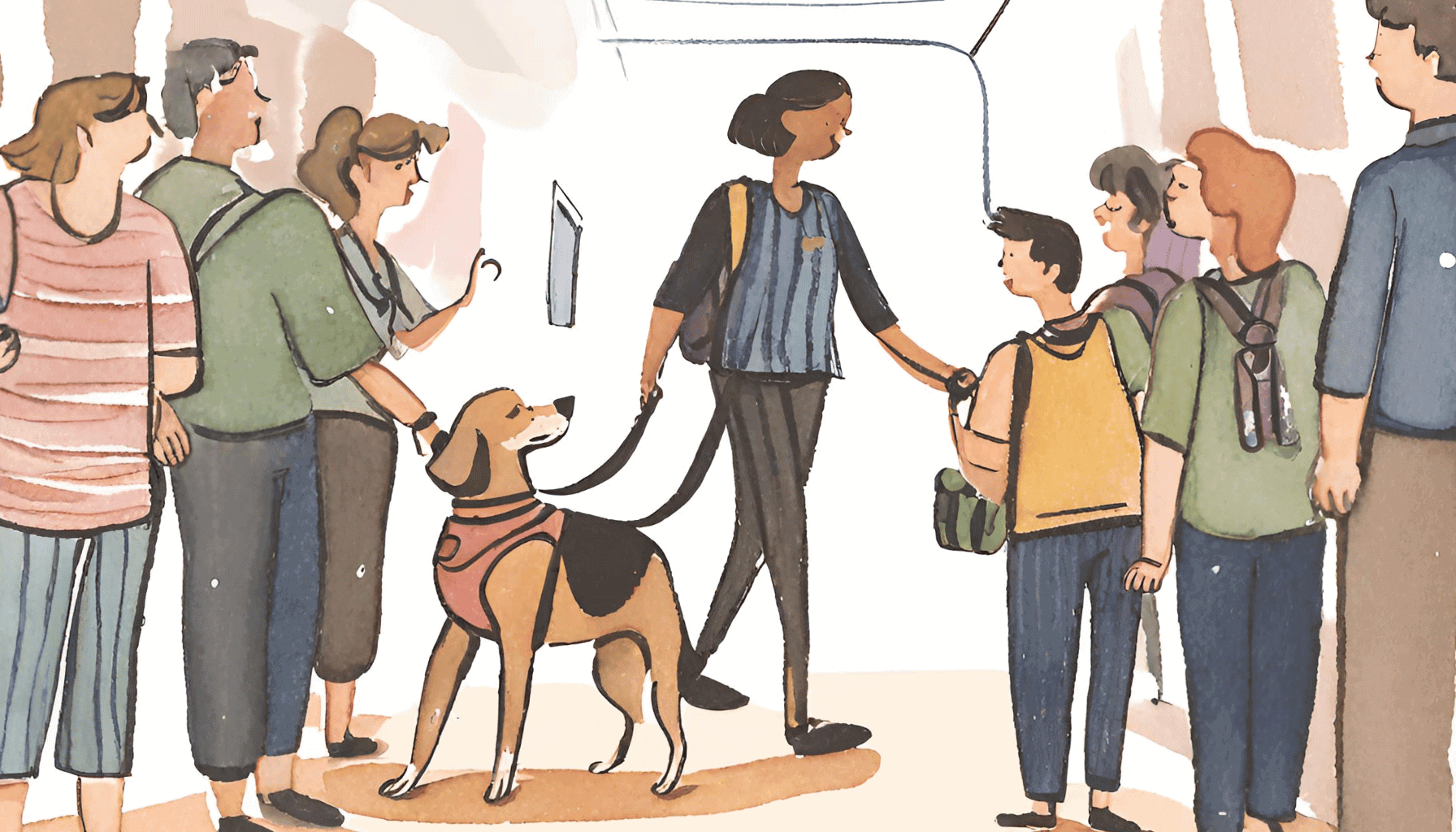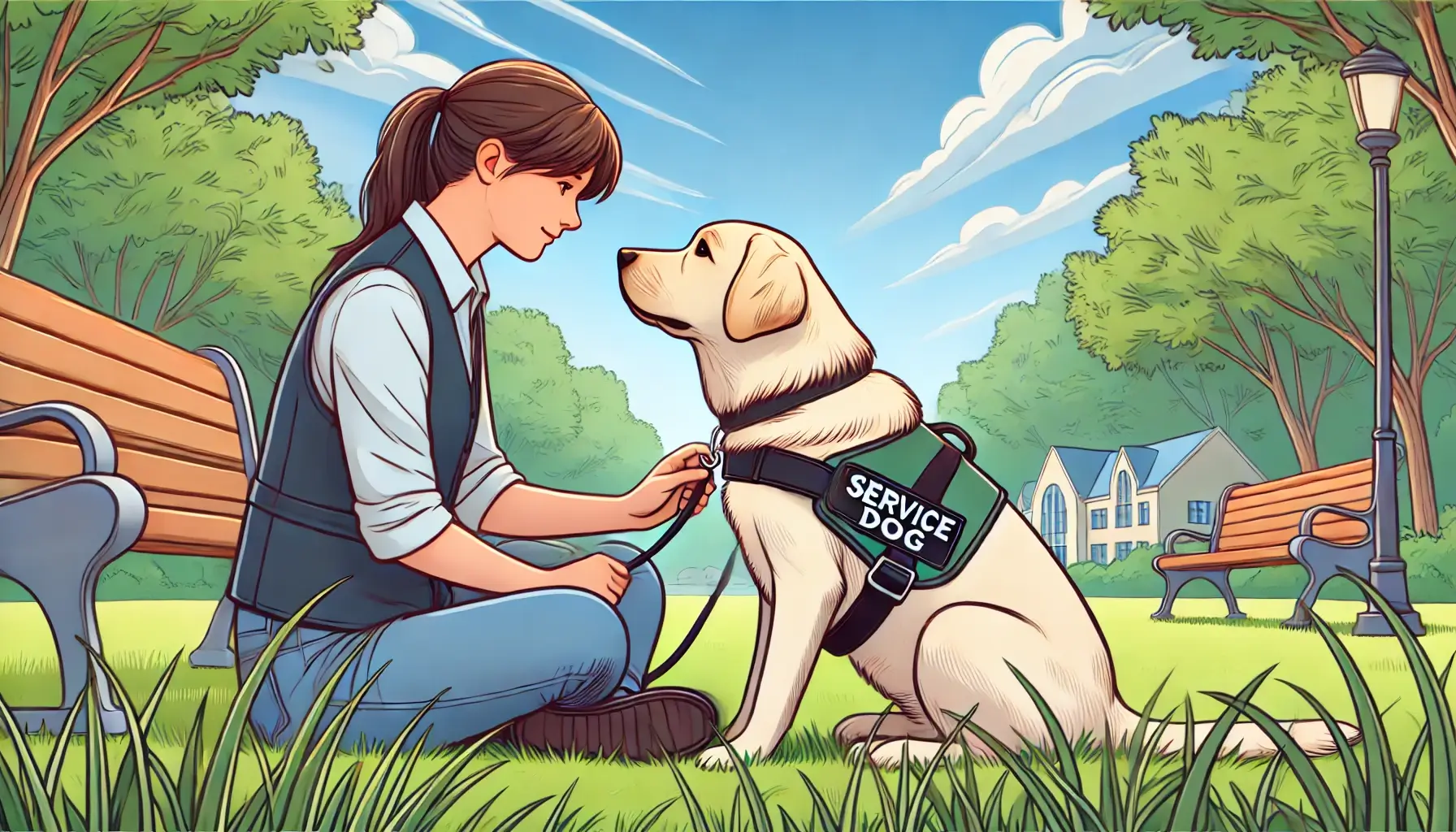Table of Contents
Introduction
Emotional Support Animals (ESAs), particularly dogs, have surged in popularity as vital companions for individuals facing mental health challenges. They are not just pets; they are crucial support systems, providing comfort and stability. In today’s society, where mental health is increasingly recognized, the role of ESAs is ever more prominent. However, integrating these supportive companions into everyday settings, like high schools, raises many questions. One of the most common inquiries is, “Can I bring my emotional support dog to high school?” This detailed exploration aims to unpack the legal and social aspects of ESAs in public spaces, focusing particularly on educational environments. Alongside, we’ll share some practical advice for handling these situations effectively.
Understanding ESA Laws
Federal Laws
At the federal level, the legal landscape for ESAs is shaped by two main legislations: the Americans with Disabilities Act (ADA) and the Fair Housing Act (FHA). It’s crucial to note that the ADA does not recognize ESAs as service animals. This distinction means that ESAs do not have the same public access rights as service animals. On the other hand, the FHA provides specific protections for ESAs, mandating that individuals be allowed to live with their ESAs in housing facilities, even those with strict no-pet policies. The Air Carrier Access Act (ACAA) is another critical piece of legislation, allowing ESAs to accompany their owners during flights. However, when it comes to public places like schools, the ADA’s guidelines do not directly apply, leading to a more complex scenario.
State and Local Laws
Diving deeper, each state in the U.S. may have unique laws and regulations regarding ESAs. These can vary significantly, impacting how ESAs are treated in public and private spaces, including schools. It’s essential for ESA owners to familiarize themselves with the specific laws in their state to fully understand their rights and the legal obligations of institutions.
ESAs in Schools
The question of bringing an ESA to a high school is not straightforward and hinges heavily on both the school’s policy and the relevant state laws. Some schools may be open to accommodating ESAs, recognizing their importance in supporting student mental health. In contrast, others might refuse, citing concerns related to health and safety, such as allergies among other students or staff.
How to Approach Your School
- Understand Your Rights: Start by researching your state’s laws regarding ESAs in educational institutions. Knowledge is power, and understanding your legal standing is the first step in advocating for your needs.
- Communicate: Open a dialogue with your school administrators. It’s crucial to have clear and honest communication. Provide them with necessary documentation, such as a letter from a licensed mental health professional, to validate your need for an ESA.
- Propose Solutions: Be proactive in suggesting practical solutions to potential issues that might arise from bringing an ESA to school. This could include measures to address allergen concerns or ways to ensure the ESA does not disrupt the educational environment.
Societal Norms and Considerations
Allergies and Phobias
In a diverse school environment, it’s vital to be considerate of others who may have allergies or phobias related to animals. Respecting their space and health needs is just as important as advocating for your rights. Finding a balance where both your needs and those of your peers are met is key to a harmonious school experience.
Training and Behavior
For an ESA to be a positive presence in a school setting, it’s imperative that it is well-trained and behaves appropriately in public. This includes being calm, not showing aggression, and not causing disruptions. A well-behaved ESA is more likely to be accepted and less likely to cause concern among staff and students.
Practical Tips for ESA Handlers in Schools
- Familiarization: Introduce your ESA to the school environment gradually. This can help the animal adjust to the new surroundings and reduce stress for both you and the ESA.
- Identify Quiet Areas: Find areas in the school where you and your ESA can retreat to if needed. This could be a specific room, a quiet corner, or an outdoor space.
- Create an ESA Care Plan: Develop a plan that accounts for your ESA’s needs, such as bathroom breaks, feeding times, and rest periods, and aligns these with your school schedule.
Strategies for Introducing an ESA to a School Environment
| Strategy | Description |
|---|---|
| Gradual Introduction | Slowly acclimate your ESA to the school by visiting during off-hours or less crowded times. |
| Training and Behavior Reinforcement | Ensure your ESA is well-trained to handle the school environment without causing disruptions. |
| Establishing a Routine | Create a consistent routine for your ESA, including feeding, bathroom breaks, and rest times. |
| Seeking Supportive Allies | Identify teachers, counselors, or administrators who understand the importance of your ESA and can provide support. |
| Awareness and Education | Inform your peers and teachers about what an ESA is and the role it plays in your life, fostering understanding and acceptance. |
The Importance of Public Awareness
Educating Others
One of the key aspects of successfully integrating an ESA into a school setting is public awareness. It’s essential to educate your peers, teachers, and other staff about what an ESA is and why it’s necessary for your emotional and mental well-being. This education can foster a more understanding and accepting environment.
Advocacy
As an ESA handler, advocating for your rights and those of others in similar situations is crucial. Sharing your experiences and encouraging open dialogue about mental health and the role of ESAs can lead to more inclusive policies and a better understanding of these important companions.
Conclusion
Navigating the world with an ESA, particularly in complex environments like high schools, requires a careful balance of understanding your legal rights, preparing thoroughly, and exercising empathy for those around you. By being well-informed, engaging in open communication with your school, and planning considerately, you can successfully integrate your ESA into your daily life, paving the way for a more inclusive and supportive society.
Navigating life with an ESA, particularly in educational settings, is not just a journey for the individual but a collective movement towards greater inclusivity and understanding. By being informed, empathetic, and proactive, ESA handlers can foster a community where both their needs and the needs of others are met harmoniously.







Leave a Reply